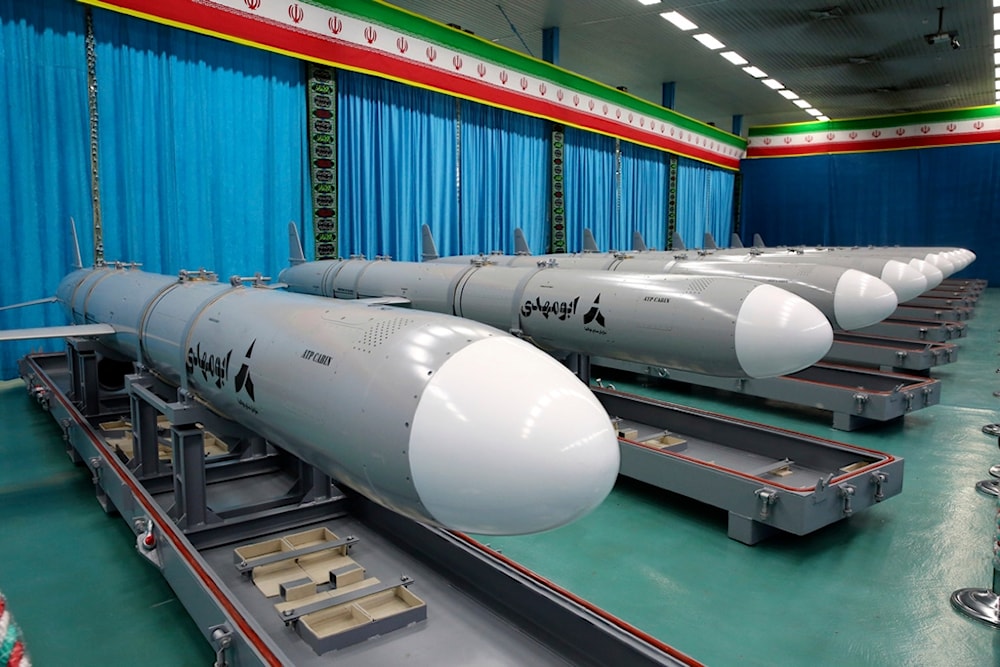Strategic cruise missiles, choppers join Iranian Navy fleet
A shipment including missiles and a helicopter has been delivered to a naval base in southern Iran, as the country continues to face a naval US threat.
-

Abu Mahdi cruise missiles are seen on display in a ceremony in Iran, on July 23, 2023. (Iranian Defense Ministry via AP)
The Iranian Navy received several homegrown weapon systems and equipment, including cruise missile systems and helicopters.
The event, attended by Major General Abdolrahim Mousavi, showcased improved systems delivered to a coastal naval base in southern Iran, on Sunday. Among the weapons that arrived at the naval base are Abu Mahdi cruise missiles, named after martyr Abu Mahdi al-Muhandis, the former deputy head of Iraq’s Popular Mobilization Units, who was martyred alongside Lieutenant General Qassem Soleimani in a US strike.
The long-range cruise missile is capable of flying at low altitudes, awarding it radar-evading capabilities. It also carries a 410kg payload and can be launched via ground launcher or from aerial or naval platforms. The highly accurate turbo-powered missile is ideal for targeting enemy naval vessels due to its long range and its ability to fly at extremely low altitudes.
Additionally, the Navy received helicopters upgraded for reconnaissance and electromagnetic warfare purposes. According to the Iranian Mehr news agency, the Navy received loitering munition systems and kamikaze drones, as well as a multipurpose drone that can employ electromagnetic weapons. The drones can be deployed in the Iranian homegrown Jamaran frigate.
Iranian Navy Commander Rear Admiral Shahram Irani pointed to the game-changing aspects of the Abu Mahdi smart cruise missiles.
Ready to respond to potential US escalation
The newly made deliveries come against the backdrop of increased Western military presence in strategic West Asian waterways, including the Red Sea and the Gulf. Specifically, the United States has deployed naval strike groups and nuclear-powered aircraft carriers to the region, hoping to intimidate allies of the Palestinian Resistance from taking action against the US-backed Israeli aggression on the Gaza Strip. The Iranian military has since released footage of its drones flying over and monitoring the USS Dwight D. Eisenhower near the Strait of Hormuz.
Although no military action has yet been officially taken on the part of Iran, the Yemeni Armed Forces have posed the most significant threat to Israeli assets in the Arabian Sea and the Red Sea. In fact, the US has scrambled to the rescue of "Israel", by forming a floundering Naval coalition with 19 other countries.
On this point, Iran's Defense Minister Mohammad Reza Ashtiani declared that the suggested US-backed multinational task force is due to find itself facing "extraordinary problems".
"If they make such an irrational move, they will be faced with extraordinary problems," Ashtiani said, without specifying what actions would be taken in response to the US move.
This comes in light of US National Security Advisor Jake Sullivan confirming to reporters last week that the US is discussing with "other countries" the formation of a "maritime task force ... to ensure safe passage of ships in the Red Sea".
Read more: Iranian drone over USS Eisenhower being looked into by Pentagon

 3 Min Read
3 Min Read










